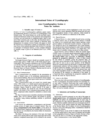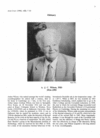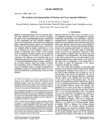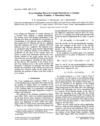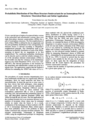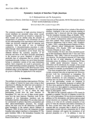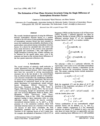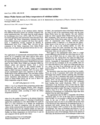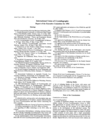issue contents
January 1996 issue

Cover illustration: Indicatrix of the inverse of Young's modulus for ADP, a tetragonal crystal. Courtesy of A. Authier, Laboratoire de Minéralogie-Cristallographie, Université Pierre et Marie Curie, Paris, France.
international union of crystallography
Free 

obituaries
Free 

research papers
The analysis of neutron and X-ray reflectivity in terms of partial structure factors is described in detail. The method is shown to be an effective means of overcoming problems associated with phase and composition ambiguity. It also offers a means of enhancing the resolution of the experiment.
A formalism of the ODF description for textured quasicrystals has been suggested. Textures typical of melt-spun icosahedral and decagonal quasicrystals have been analysed.
The physical origin of oscillations in X-ray standing-wave profiles and rocking curves of crystals distorted by a constant strain gradient is analysed using theoretical and numerical methods. A criterion for visibility of the fringes and formulae for their period are derived.
A new derivation of the probabilistic distribution of one-phase structure seminvariants is presented for an isomorphous pair of structures. The test results with three known protein structures are satisfactory.
The symmetry properties of crystalline interface triple junctions are studied using colour crystallography and the principle of symmetry superposition. The invariances and equivalences in such systems are examined and equivalent by symmetry tricrystals are found.
A conditional probability distribution of quartet phase sums is derived on the basis of the differences between isomorphous structure factors. The quartet estimates obtained in this way for calculated protein data are reliable even if only the main-term reflections are employed.
short communications
Experimental values of Debye–Waller factors of rubidium halides are compared with values from four lattice dynamical models. Debye temperatures calculated from experimental Debye–Waller factors are compared with those from specific heats.
international union of crystallography
Free 



 journal menu
journal menu









